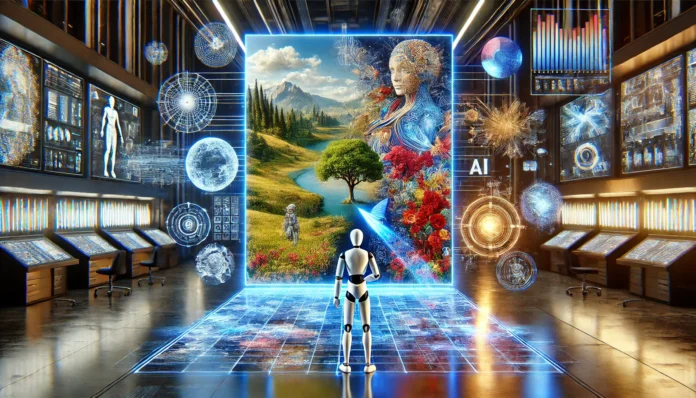Generative AI has undergone a dramatic transformation in recent years, evolving from producing rudimentary text and images to creating hyper-realistic content that blurs the lines between reality and artificiality. Known as Generative AI 2.0, this new era is marked by the ability to produce content with unprecedented precision and creativity. From art and entertainment to business and education, generative AI is revolutionizing content creation while also raising important questions about authenticity, ethics, and societal impact.
What is Generative AI 2.0?
Generative AI refers to algorithms, such as Generative Adversarial Networks (GANs) and large language models, designed to create new content by learning patterns from existing data. Generative AI 2.0 builds on this foundation with enhanced multimodal capabilities, allowing it to seamlessly integrate text, images, audio, and video into highly realistic and contextually rich outputs.
Features of Generative AI 2.0
1. Multimodal Content Creation
Generative AI 2.0 systems like OpenAI’s GPT-4 Vision and Meta’s Make-A-Video can combine multiple content formats. For example, they can generate an image or video based on a textual description or add natural-sounding audio to a silent clip.
2. Enhanced Realism
The outputs of Generative AI 2.0 are increasingly indistinguishable from human-made content, thanks to improved algorithms and larger training datasets.
- Example: Hyper-realistic AI-generated portraits or voice synthesis tools that mimic human emotions and intonations.
3. Contextual Adaptability
These systems can tailor content to specific audiences or contexts. For instance, AI can generate a marketing campaign that aligns with a brand’s tone and target demographic.
Applications Across Industries
1. Entertainment and Media
Generative AI 2.0 is reshaping how movies, games, and music are produced.
- Example: AI-generated scripts, character designs, and virtual actors are being used in film production. Video games now feature AI-driven worlds that adapt to player behavior.
2. Business and Marketing
Companies use generative AI to create personalized marketing campaigns, product designs, and customer engagement strategies.
- Example: Tools like Jasper AI craft targeted ad copy, while AI-generated videos enhance product promotions.
3. Education and Training
Generative AI creates immersive learning experiences, including interactive simulations and customized study materials.
- Example: AI-generated virtual tutors can provide personalized feedback and guidance to students in real-time.
4. Art and Creativity
Artists and designers are leveraging AI to co-create works, expanding the boundaries of traditional creativity.
- Example: Platforms like DALL-E 3 allow users to generate detailed artwork based on simple prompts.
Challenges and Ethical Considerations
While Generative AI 2.0 offers immense potential, it also presents significant challenges:
- Deepfakes and Misinformation: Hyper-realistic AI-generated videos and audio can be misused to spread false information or harm reputations.
- Copyright Issues: The use of copyrighted materials in AI training datasets raises legal and ethical concerns.
- Bias in Outputs: AI models can inadvertently perpetuate societal biases present in their training data.
- Loss of Authenticity: The ease of generating realistic content risks diluting the value of human creativity.
Future Prospects of Generative AI 2.0
The future of Generative AI 2.0 lies in balancing innovation with ethical considerations. Potential developments include:
- Regulation and Transparency: Clear guidelines and watermarking systems to identify AI-generated content.
- Collaborative Creativity: Tools that enhance human creativity rather than replace it, fostering collaboration between artists and AI.
- Specialized AI Models: Focused generative models tailored for specific industries, such as medicine, architecture, or environmental conservation.
Conclusion
Generative AI 2.0 represents a monumental leap in artificial intelligence, enabling the creation of hyper-realistic, adaptive, and multimodal content. Its impact is reshaping industries, unlocking new creative possibilities, and driving efficiency across sectors. However, its rapid advancements call for careful navigation of ethical challenges to ensure it remains a force for good. As we embrace the possibilities of this powerful technology, maintaining a balance between innovation and responsibility will be key to its successful integration into society.





